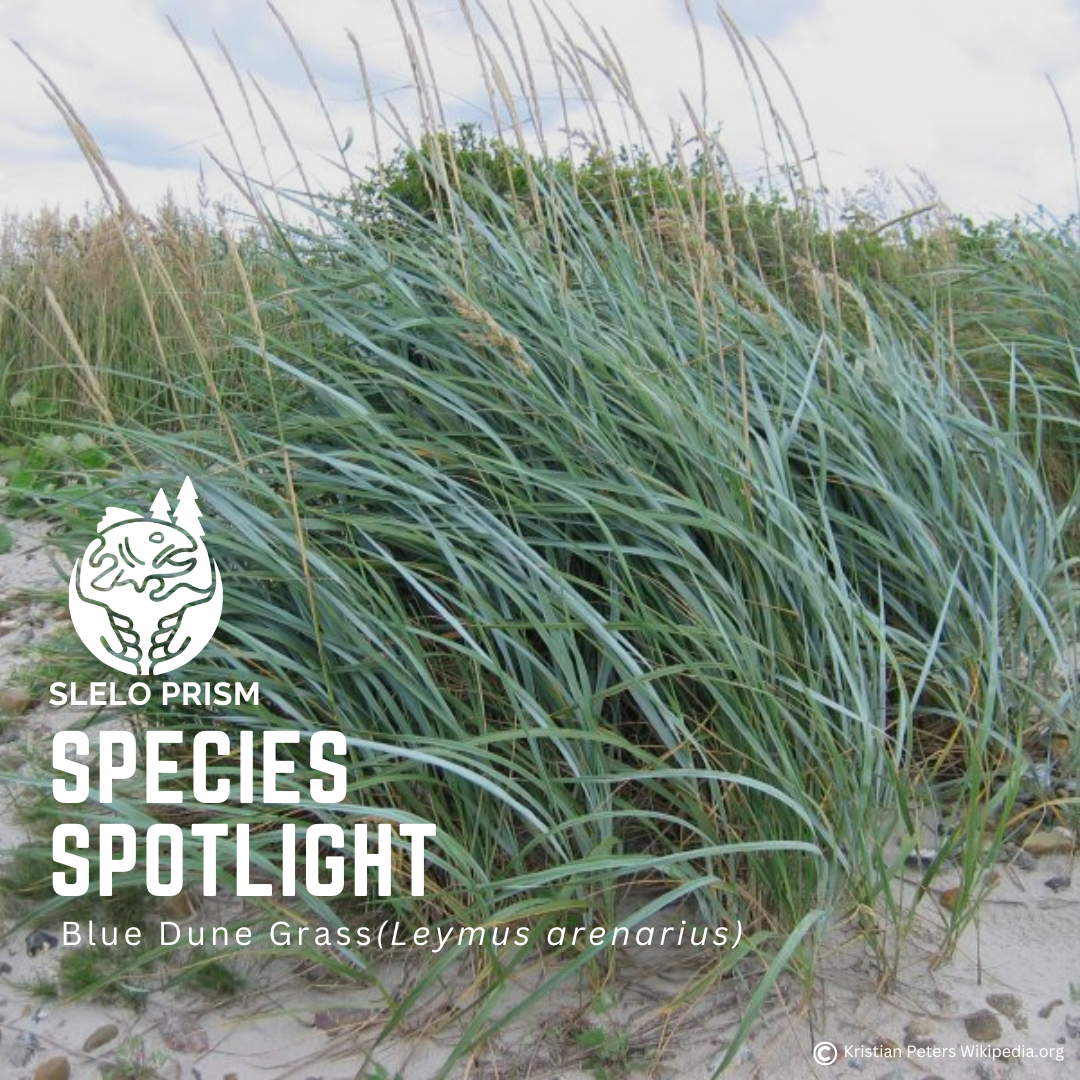This article was featured in the 2025 Winter Newsletter by Adrien Owens, SLELO PRISM.
Leymus arenarius, also commonly referred to as “blue dune grass,” “European dune grass,” blue lyme grass,” or “sand rye grass,” is an invasive sand-loving plant recognized for its blue-grey colored leaf blades. It is commonly used for ground cover and erosion control due to its rigorous growth behavior, however it can easily escape cultivation and overrun garden spaces, therefore intentional plantings should be avoided.
Native to Europe, L. arenarius grows and spreads aggressively through a rhizome network and has become invasive in Great Lakes dune habitats in midwestern states such as Wisconsin. According to the Flora of North America, Leymus arenarius has been found in New York with some sightings in Long Island, and bordering Connecticut, as well as parts of Canada in Ontario & Quebec. If this species starts spreading, it could have negative impacts on New York’s dune communities.
L. arenarius is tolerant to a wide array of conditions including a variety of soil types, moisture levels, acidity and alkalinity ranges, and can withstand high temperatures. It grows dense monocultures that choke out native vegetation that provide vital habitat to dune species. Our native species of American beach grass (Calamagrostis breviligulata) plays a vital role in the ecology of Great Lakes shorelines. C. breviligulata stabilizes sand dunes, which in return protect the coast from the erosive forces of waves and storms. The stable environment created by beachgrass also provides habitat for a variety of wildlife. Unlike invasive L. arenarius species, our native beach grasses and shrubs don’t create monoculture fields across our region’s unique sandy habitats. Instead, they grow in dispersed patches, with areas of sand in between. This allows other dune plants like Great Lakes sand cherry (Prunus pumila L. var. pumila) and common milkweed (Asclepias syriaca L.) to flourish. This native plant diversity provides habitat for pollinators and other insects which are the basis of ecosystem food webs. The open sand also creates crucial nesting sites for threatened birds like the piping plover.
The Great Lakes dunes are the largest freshwater dune ecosystem in the world. Dune communities are a mosaic of vegetation patches that provide key habitat for rare and endangered species in our region. Unfortunately, invasive species pose a threat to beachgrass and the dune ecosystems it helps create. It is our role to protect these unique ecosystems by monitoring the threat of invasive species to safeguard the health of our region’s freshwater coastal communities.
You can help protect the dunes by keeping an eye out for blue dune grass; look for grayish-blue, broad, flat, arching leaves that grow between 23-35 inches tall with narrow flower spikes with similar coloring until they turn beige later in the growing season.









Please fill out the form below to be added to our listserv and receive our seasonal newsletter, event invitations and other announcements.


